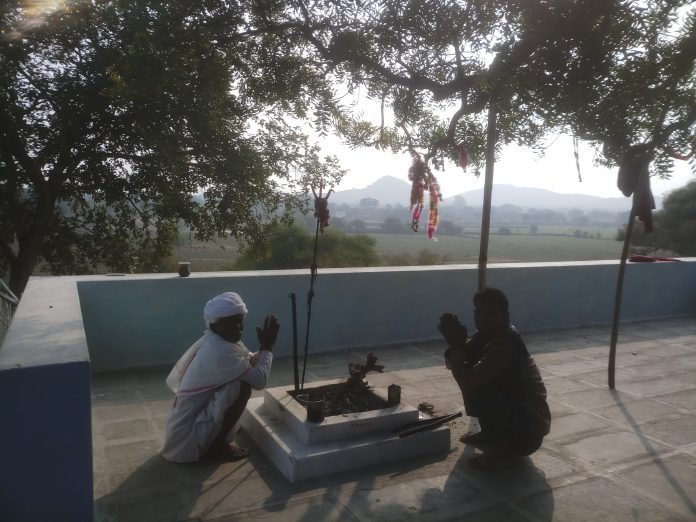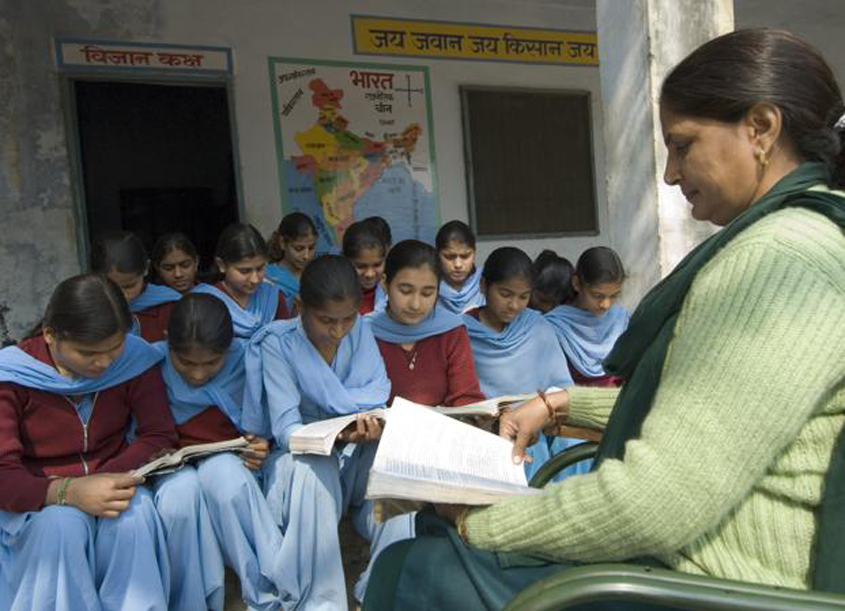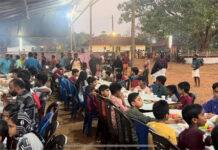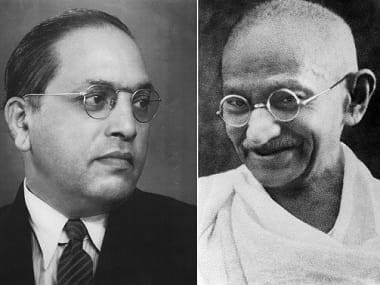
Chamunda Goddess is one of the seven matrikas or forms of the Hindu divine mother and is a depiction of Shakti or power. The other matrikas include Goddesses like Kali and Durga. All of these forms of the divine mother are revered throughout the length and breadth of India. What is unique to the Chamunda goddess’ temple in Thana village is the fact that it has a Dalit priest. The village is located in Bhilwara district, which is some 250kms away from Jaipur, the capital city of Rajasthan. Defying the hierarchies of the Hindu caste system, this temple in Thana village has been managed for several generations by members of a Dalit group which identifies itself as members of the ‘Salvi samaj’. Officially known as ‘Meghwal’ in the categorisation of scheduled castes, they form one of the largest groups of SCs in Rajasthan, and are traditionally engaged in cultivation and agricultural labour activities. Thana village however is dominated by members of Rajput and Gujjar communities – both of which tend to practice discrimination against SCs of the village. For instance, “to this day members of Dalit community are not permitted to drink water from their utensils by these communities”, says Neha Salvi, a twenty year old resident of Thana village.
According to a report of the National Crime Records Bureau, the highest rate of crimes against SCs for the period 2017-19 in India was recorded in Rajasthan at 55.6%. This is nearly double of what was recorded for Uttar Pradesh, the state which has the highest population of SCs in the entire country. While one reason for this stark difference may be attributed to under-reporting in Uttar Pradesh, nonetheless, the high figure of crimes committed against SCs in Rajasthan is something that cannot be brushed away. Given this kind of a crime history, the existence of such a temple in Rajasthan where the priestly duties are performed by a member of the Dalit community is all the more surprising, and significant.
Perched in one corner of the village, the white and yellow temple is located next to a big piece of land which becomes a lake in rainy season, and is also known as the Thana ‘talaab’. A short white staircase leads up to the temple, which consists of a small modestly built pyramid. Sitting inside is the silver statue of Chamunda Goddess draped in a red saree. While there are different versions of Chamunda Goddess’ origins, a common thread in all stories is that she is the goddess who slayed the demons Chanda and Munda, the generals of the demons Shumbha and Nishumbha, who in turn were killed by Kali. On her either side are small statues of ‘Kala Bhairon’ and ‘Gora Bhairon’, both of whom are forms of Shiva. According to local traditions, the difference between the two forms of Bhairon lies in the things are offered to the two – while Kala Bhairon accepts alcohol and meat as offerings, Gora Bhairon is offered only milk by devotees.
Legend has it that the statue of the Chamunda goddess worshipped in the temple surfaced on this land when it was being ploughed by a member of the Koli community, who are also included in the list of Scheduled Castes of Rajasthan. It is believed that when the plough struck the statute’s stomach, milk sprang out of it. When it struck the statute’s neck, it was blood that sprang out. It is because of this second strike that the neck of the Goddess is titled on one side. On being struck by the plough, the Goddess cursed the Koli community who were at that time the dominant group in the area. But the Chamunda Goddess’ wrath ended their domination in the area. The temple itself was built later by an individual of the Banjara or nomadic community of Rajasthan. It is believed that when this Banjara man’s son was bitten by a snake, he prayed to the Chamunda Goddess and promised her that if his child recovered he would build a temple for her. Since the goddess granted his wish he dutifully built the temple for her. After him, an endless number of individuals have visited the temple to have their wishes granted by the Goddess. I could not find any clear answer to the question of how did members of the Salvi community become the temple’s priest. According to the current priest, Jai Ram Ji, the temple has been managed by Salvi’s since several hundreds of years. One can only assume that they took control of the temple after the Kolis left the area.
For those who come to the temple to seek the Goddess’ blessings there exists a very interesting tradition for them find out whether their wish will be granted or not. The head, shoulders and arms of the Goddess’ statue is covered with neem leaves and a brass plate is kept near her foot. This plate is divided into two parts by a thin streak of incense ash. One part consists of a few pieces of corn while the other part is kept empty. It is believed if the leaf falls on the side of the maize while one is praying to the Goddess, their wish is granted. If it falls on the empty side, the person too will return with empty hands!
Though upper caste members do not obstruct the Salvis from performing priestly duties in the temple, the lack of support becomes evident in the limited resources the temple functions on as compared to other temples that adhere to caste hierarchies and have Brahmin priests. The Arti or prayers are offered to the Goddess only on Sundays. When I asked the seventy year old temple priest, Jai Ram ji why was it so, pat came his reply, “If you can arrange for my monthly salary, I am happy to perform priestly duties for on all seven days of the week”! Wearing a white turban that matches with his big white moustache, he is a small farmer who works on his land or as a MGNREGA worker the remaining six days of the week to earn his living. The prayers or arti are performed thrice on Sunday, once in the morning and twice in the evening. It is accompanied by drums and khanjanis played by a couple of other men who like Jai Ram ji, also possess an alternate source of livelihood. Jai Ram ji, along with these individuals stand in a small formation and offer the prayers in not just in front of the goddess but in all four directions of the temple. “This is to pay obeisance to the 36 crore Gods which we believe prevail in all four directions” says Sonu Salvi, a 21 year old resident of the village.
Though the Salvis view their actions more in light of upholding the tradition of paying obeisance to this Hindu symbol of Shakti, one cannot help but marvel at the mundane yet brave defiance of the rigid hierarchies of the oppressive Hindu caste system.
Radhika Chatterjee completed her Ph.D from the Centre for Law and Governance, JNU and is presently working in Bhilwara district, Rajasthan












